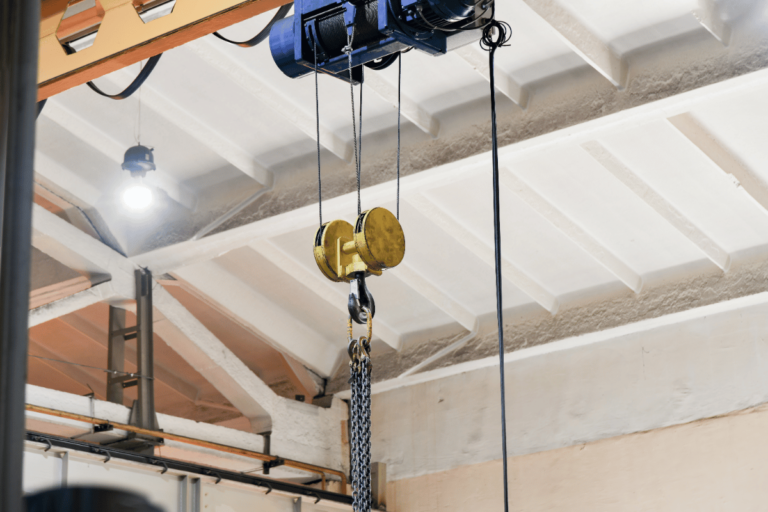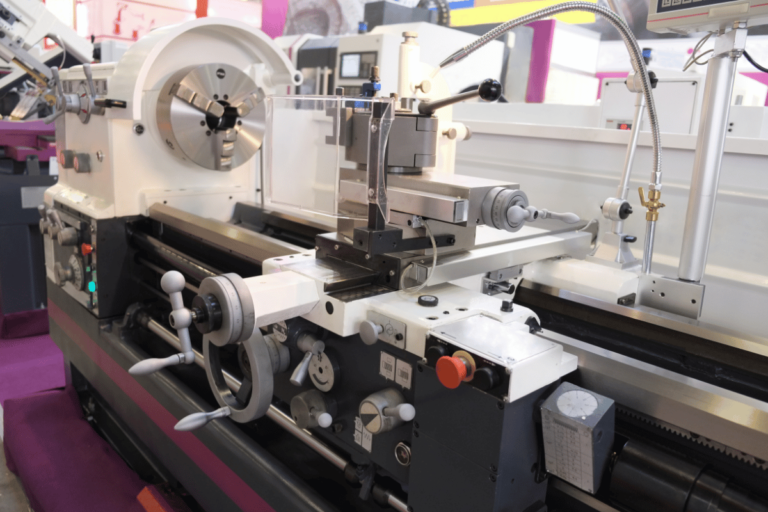Root Cause Analysis Techniques in Manufacturing
In 2016, only 14% of manufacturers used data for analytics in their operations. This shows many are missing out on a big chance to improve Manufacturing Quality Control. Root Cause Analysis (RCA) is a key method that goes deep to find the real reasons behind problems. It helps solve issues like machine breakdowns, poor product quality, and accidents, not just their symptoms. This method is vital for Continuous Process Improvement and Manufacturing Effectiveness.
Using RCA can change how manufacturing works. Studies show it can stop problems from happening again, making work safer and products better. This approach fixes Quality Issues and makes Manufacturing Operations better by cutting downtime and boosting productivity. In short, RCA is more than fixing problems; it’s a way to build efficient, lasting manufacturing systems.
Key Takeaways
- Only 14% of manufacturers utilized corporate analytics programs for manufacturing data in 2016.
- Root Cause Analysis is essential for Manufacturing Quality Control and prevents issues from recurring.
- Structured RCA processes improve safety, quality, and efficiency in manufacturing.
- Effective RCA implementation leads to higher productivity and optimized operations.
- MANTEC offers expert consulting services to aid manufacturers in implementing RCA strategies.
Understanding Root Cause Analysis
Root Cause Analysis (RCA) is a detailed method to find the main reason behind disruptions or issues. It goes back to the start to find the root cause. In manufacturing, it’s key for solving problems quickly and effectively.
Definition and Importance
Root Cause Analysis aims to solve the whole problem, not just a part of it. It looks at what happened, how it happened, why it happened, and how to stop it from happening again. This method is vital for making production lines reliable and stable.
By focusing on the root cause, manufacturers can fix real problems, not just symptoms. This leads to fewer defects and makes operations more efficient. RCA also encourages a proactive approach to solving problems, meeting industry standards.
Key Benefits for Manufacturers
RCA brings many benefits to manufacturers. It sets better standards for processes through Production Process Enhancement. It finds hidden inefficiencies and weaknesses, leading to big cost savings.
RCA also encourages a proactive culture across departments, leading to more improvements. It helps define, assess, and fix problems, making customers happier and operations more productive.
The five steps of RCA include collecting data, assessing it, taking action, informing everyone, and checking up. This method makes sure solutions work well and last, preventing problems from coming back.
During the action phase, clear communication and training are key. They make sure everyone knows what to do and how to do it. Tracking how well these actions work helps improve and keep manufacturing stable over time.
Common Root Cause Analysis Techniques
Root cause analysis (RCA) is key in quality management for manufacturers. It helps find the real issues behind problems. This way, manufacturers can fix problems for good and work more efficiently. The Fishbone Diagram Method and the 5 Whys Analysis are two main techniques used.
Fishbone Diagrams
The Fishbone Diagram Method, also known as Ishikawa Diagram, is a visual tool for cause and effect analysis. It helps map out possible causes of problems. This makes solving problems easier in team settings where everyone shares ideas.
Teams can break down possible causes into main areas. This makes finding the root cause simpler, even with complex problems.
5 Whys Analysis
The 5 Whys Analysis was developed by Sakichi Toyoda. It uses a questioning method to find the real causes of problems. By asking “why” five times, it digs deep to find the main issue.
This method can be used alone or with other tools like Fishbone Diagrams. It depends on the problem’s complexity.
Fishbone Diagrams and 5 Whys Analysis are key in solving problems in manufacturing. They work well with other tools like Pareto Charts and Scatter Plot Diagrams. Using these methods helps find and fix quality issues, making operations better.
| – Techniques | – Description | – Application |
|---|---|---|
| Fishbone Diagram Method | Visual mapping of causes and effects | Quality improvement teams, brainstorming sessions |
| 5 Whys Analysis | Repetitive questioning to identify root causes | Investigative questioning technique for deeper insights |
Implementing Root Cause Analysis in Manufacturing
Starting Root Cause Analysis (RCA) in manufacturing means following a clear process improvement strategy. It’s all about defining the problem well, collecting good data, and figuring out cause and effect. It’s key to follow steps carefully to look at all possible causes.
Important tools for effective RCA execution include fishbone diagrams, Pareto charts, scatter plots, and control charts. These tools help keep manufacturing quality high by finding and understanding problems. For instance, a fishbone diagram helps find many possible causes of a defect, making the investigation deeper.
- Define the Problem: Clearly state the issue with the process or product.
- Collect and Analyze Data: Use facts and statistical tools to understand the issue’s size.
- Identify Root Causes: Use tools like 5 Whys or Failure Mode and Effects Analysis (FMEA).
- Implement Solutions: Make and put into action fixes based on what you found.
- Evaluate Results: Check if the problem is fully fixed and if it doesn’t come back.
Keeping solutions working well is a big part of RCA. This might mean updating work guides, training workers, and changing quality manuals. Keeping up with improvements also means checking on things, using tools to analyze systems, and checking how processes work.
Teams that solve problems together are key in RCA. Getting everyone involved with actions like Gemba walks makes sure solutions work and are based on many ideas. Also, Kaizens or ongoing improvement efforts help keep making things better and solving problems well.
ERP and MRP software are crucial in RCA. They help find and fix root causes fast, leading to quick problem solving and high manufacturing quality.
RCA has a big effect on a company. It cuts downtime, reduces mistakes, and makes processes better. Using RCA with lean manufacturing makes things even better, helping companies work more efficiently and increase productivity.
| Tool | Usage | Benefits |
|---|---|---|
| Pareto Chart | Identify key issues contributing to problems | Prioritizes efforts, visualizes most significant causes |
| Fishbone Diagram | Analyze potential factors causing defects | Systematic exploration of all possible causes |
| FMEA | Assess potential failure modes | Prevention and mitigation of potential problems |
| Scatter Diagram | Correlation analysis between variables | Determines relationships and underlying trends |
Advanced Techniques: Six Sigma and Lean Manufacturing
Advanced methods like Six Sigma and Lean Manufacturing help manufacturers improve their processes. They use detailed strategies to boost Lean Operational Excellence and cut down on Waste Reduction Methods.
Six Sigma Methodology
The Six Sigma Methodology uses statistics to lower process variations and defects. It goes through five stages: Define, Measure, Analyze, Improve, and Control. Six Sigma Implementation aims to make processes better, focusing on quality and efficiency.
This method helps companies make smart, fact-based choices. It boosts their overall performance.
Lean Manufacturing Principles
Lean Manufacturing is all about cutting waste in the production process. It makes operations smoother and workflow better, which means more efficiency and lower costs. Tools like value stream mapping and the Kaizen Methodology help with this.
Removing things that don’t add value leads to Lean Operational Excellence. This benefits both the company and its customers by giving them better products faster.
“Lean Six Sigma can help reduce manufacturing overhead and quality costs by 20% and inventory by 50% in less than two years.”
| Aspect | Six Sigma | Lean Manufacturing |
|---|---|---|
| Core Focus | Reducing process variation | Eliminating waste |
| Approach | Statistical Process Control | Flow and value stream mapping |
| Tools | DMAIC, SPC | Kaizen, 5S |
| Improvement Rate | Incremental but significant | Rapid and continuous |
Using Six Sigma and Lean Manufacturing together leads to big cost cuts, faster processes, and top-quality products. These methods ensure ongoing improvement and happy customers.
Tools for Effective Root Cause Analysis
In manufacturing, using the right RCA Toolkits is key for solving problems fast and well. Techniques like Fishbone Diagrams and the 5 Whys are simple yet powerful. But, going deeper with advanced tools gives a full analysis.
The Pareto Chart is great for showing the main causes of problems. It highlights what causes downtime, like frequent machine failures or long setup times.
The 5W1H method digs deep into a problem by asking six key questions: what, when, where, who, why, and how. This helps create a solid plan for solving problems with Comprehensive RCA Tactics.
The Ishikawa Fishbone Diagram groups possible causes into categories like Man, Machine, Methods, Materials, Measurement, and Mother Nature. This helps analyze many factors that affect a problem.
- Pareto Chart
- 5W1H Method
- Ishikawa Fishbone Diagram
- 5 Whys Analysis
- Fault Tree Analysis
Each tool is crucial for effective fault analysis. The 5 Whys method asks questions to find the root cause. Fault Tree Analysis uses logic to check all possible causes from the top down.
Using a mix of Problem Solving Frameworks is key to solving problems well. These methods give better insights and help make strong, data-based decisions in manufacturing.
| RCA Tool | Application | Benefit |
|---|---|---|
| Pareto Chart | Identifying significant causes of downtime | Prioritizes issues based on impact |
| 5W1H Method | Comprehensive problem understanding | Clarifies areas for further analysis |
| Ishikawa Fishbone Diagram | Categorizing possible causes | Organizes team ideas effectively |
| 5 Whys Analysis | Drilling down to root causes | Ensures thorough analysis |
| Fault Tree Analysis | Exploring potential causes | Structural problem-solving |
By using these RCA Toolkits, teams in manufacturing can improve their problem-solving skills. This leads to better productivity and top-notch operations.
Role of Technology in Root Cause Analysis
Technology has changed how manufacturing deals with and stops problems. By using Advanced Predictive Analytics, companies can spot and stop issues before they start. This makes things run smoother.
Machine Data and Predictive Maintenance
Using machine data helps with predictive maintenance. It lets companies know when they need to fix things early. This saves money and cuts down on lost time.
- Pareto Principle: 80% of problems arise from 20% of failure modes in root cause analysis.
- 5 Whys Technique: Involves asking “why” five times to uncover root causes.
ERP Integration for Process Optimization
ERP systems help make root cause analysis better. They make it easier to use Operational Data and optimize ERP systems. This means making sure manufacturing processes are the same everywhere, which helps use resources better and boosts productivity.
Smart Factory Solutions use these new technologies to keep information flowing well and operations running smoothly. By linking machine data and ERP systems, companies can make their production flow better and respond faster.
| Benefits | Role |
|---|---|
| Predictive Maintenance | Reduces Downtime |
| ERP Systems Optimization | Enhances Productivity |
| Automated Error Prevention | Ensures Operational Efficiency |
Conclusion
Root Cause Analysis (RCA) is key for manufacturers wanting to succeed in sustainable manufacturing. It digs deep into production problems to find and fix them. This leads to better quality, safety, and productivity.
Tools like Fishbone Diagrams, 5 Whys Analysis, and Six Sigma help tackle root causes. These methods make up a strong toolkit for solving problems.
As technology gets better, using machine data and predictive maintenance is crucial. This helps manufacturers make better decisions and work more efficiently. ERP systems also help improve processes, making quality enhancements easier.
RCA does more than just fix problems. It creates a culture of ongoing improvement. It helps manufacturers stay ahead in a changing market. By using RCA, companies can save costs, make better products, and lead in innovation.
Source Links
- How to Conduct Root Cause Analysis in Manufacturing
- Root Cause Analysis (RCA) in Manufacturing
- Root Cause Analysis in Manufacturing – A Simple Guide
- Root Cause Analysis Explained | Reliable Plant
- Identifying Defects: How Root Cause Analysis Will Save Manufacturing
- 7 Common Mistakes in Manufacturing Root Cause Analysis (RCA) & How to Avoid Them
- A Guide to Root Cause Analysis – Examples, Tools, & More
- The 6 Top Root Cause Analysis Tools to Identify Problems
- What are the key steps and tools for performing root cause analysis in manufacturing?
- How to Perform Root Cause Analysis in Manufacturing
- How to Implement 5 Whys Root Cause Analysis in Manufacturing – dataPARC
- Supercharge Lean Six Sigma with Root Cause Analysis | Reliability
- Process Control in Lean Six Sigma. Techniques & Implementation – SixSigma.us
- 11 Effective Process Improvement Techniques in Manufacturing
- The 4 Best Root Cause Analysis Tools for your Factory – 4Industry
- 7 Powerful Problem-Solving Root Cause Analysis Tools
- 8 Effective Root Cause Analysis Tools for your Business
- Root Cause Analysis: How Technology Can Help
- Six reasons to automate root cause analysis in manufacturing
- What are the most effective ways to use technology for root cause analysis?
- Mastering Manufacturing Challenges: The Art of Root Cause Analysis
- The 5 Whys Technique Deep-dive
- Root Cause Analysis Examples in Manufacturing – DataMyte







